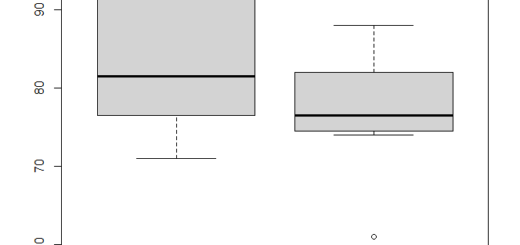Understanding the Student’s t-Distribution in R
Understanding the Student’s t-Distribution in R, The Student’s t-distribution, also known as the t-distribution, is a significant concept in statistics, especially in hypothesis testing and constructing confidence intervals.
This probability distribution is particularly useful when dealing with small sample sizes or unknown population variances.
In this article, we will discuss the t-distribution’s properties and how to work with it using R, a popular programming language for statistical analysis.
The t-Distribution and Its Properties
The t-distribution is an extension of the standard normal distribution (Z-distribution) and is represented by a bell-shaped curve.
It was introduced by William Gosset under the pseudonym “Student” while working at the Guinness Brewery in the early 20th century.
The primary difference between the t-distribution and the standard normal distribution is the presence of degrees of freedom (df), which influences the shape of the curve.
As the degrees of freedom increase, the t-distribution converges to the standard normal distribution.
For smaller degrees of freedom, the t-distribution has heavier tails, making it more likely to observe extreme values.
Three-Way Tables in R » finnstats
Working with the t-Distribution in R
R offers several built-in functions to work with the t-distribution. These functions are:
- dt(x, df): This function calculates the probability density function (PDF) of the t-distribution. The PDF represents the probability of observing a value within a specific range, given the degrees of freedom.
- pt(x, df): This function computes the cumulative distribution function (CDF) of the t-distribution. The CDF indicates the probability of observing a value less than or equal to a specific threshold, given the degrees of freedom.
- qt(p, df): This function determines the quantiles (inverse of the CDF) of the t-distribution. Quantiles are values that divide a probability distribution into specific proportions, such as the 2.5th and 97.5th percentiles for a 95% confidence interval.
- rt(n, df): This function generates random numbers from the t-distribution. It can be useful for simulating data or creating visualizations.
To illustrate the usage of these functions, consider the following examples:
Example 1: Computing the PDF of the t-distribution
x <- seq(-5, 5, length.out = 100) # Define a sequence of x values
df <- 10 # Set the degrees of freedom
pdf <- dt(x, df) # Compute the PDF
plot(x, pdf, type="l",
main="PDF of t-distribution with 10 degrees of freedom")
Example 2: Calculating the CDF of the t-distribution
x <- seq(-5, 5, length.out = 100) # Define a sequence of x values
df <- 10 # Set the degrees of freedom
cdf <- pt(x, df) # Compute the CDF
plot(x, cdf,
type="l", main="CDF of t-distribution with 10 degrees of freedom")
Example 3: Finding quantiles of the t-distribution
p <- c(0.025, 0.975) # Define the probabilities for which we want to find quantiles
df <- 10 # Set the degrees of freedom
quantiles <- qt(p, df) # Compute the quantiles
print(quantiles)[1] -2.228139 2.228139
Example 4: Generating random numbers from the t-distribution
n <- 100 # Set the number of random numbers to generate
df <- 10 # Set the degrees of freedom
random_numbers <- rt(n, df) # Generate random numbers
hist(random_numbers,
main="Random numbers from t-distribution with 10 degrees of freedom")
Conclusion
The t-distribution is a valuable tool in statistical analysis, particularly when dealing with small sample sizes or unknown population variances.
R provides various functions to work with the t-distribution, making it convenient for statisticians and data analysts to apply this concept in their work.
Calculating Conditional Probability in R » Data Science Tutorials





